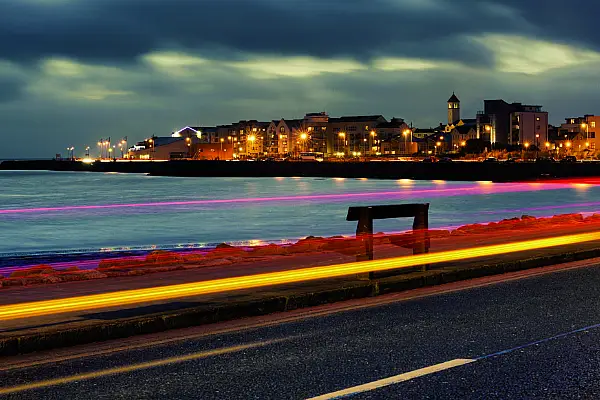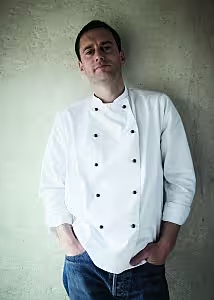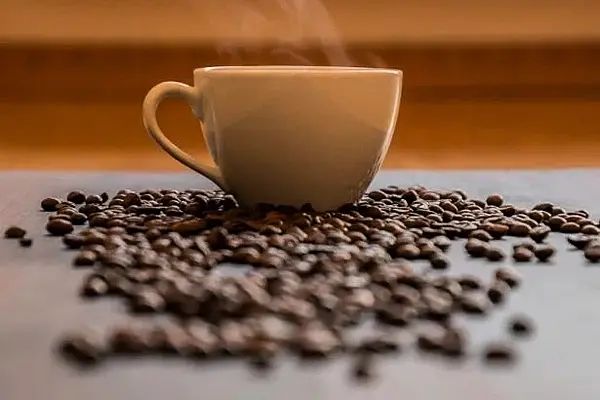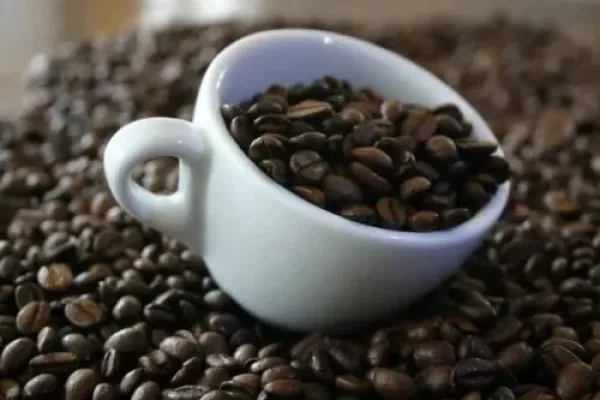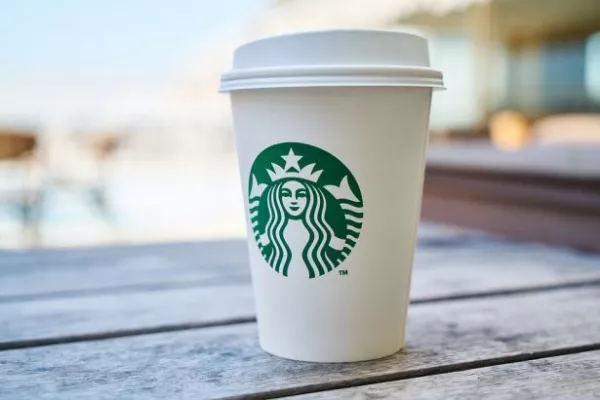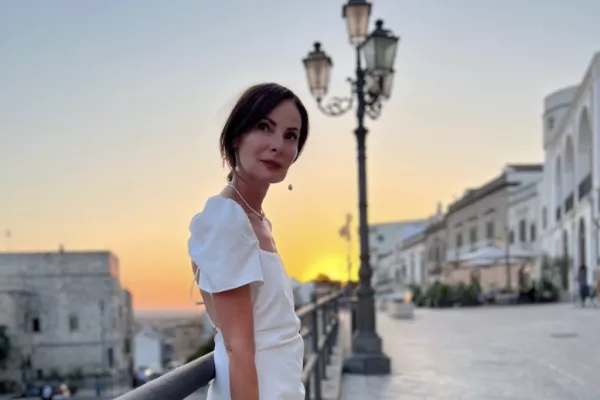In the first of a new series of reports exploring how the hospitality industry is faring in regional centres around the country, Hospitality Ireland's ANDREW JENNINGS travelled to Galway to meet some well-know names in the city’s hospitality fraternity.
***************************************************************************************************
Standing at the bottom of Quay Street in Galway as a gusty late November westerly wind swings in off the north Atlantic and up the mouth of the Corrib, it is not a place for the faint-hearted.
Galway is many things – ‘arty, bohemian and renowned for its pleasures,’ according to Lonely Planet – but a destination for affable weather is not generally considered one of them.
Quay Street, leading up along High Street and Shop Street, and then on to Eyre Square, is considered Galway’s tourism epicentre.
On this particular Friday night, it is relatively quiet, compared to most other Friday nights throughout the year, when these three streets are thronged and the brightly painted pubs and restaurants either side heaving.
Last September, Galway was named the world’s friendliest city in a global ranking of 266 locations. A survey by Travel + Leisure magazine polled approximately 200,000 readers, asking them to rate cities based on a number of criteria, including warmth towards visitors.
The magazine survey results deemed Galway the ‘most Irish city’ and ‘won readers’ hearts with its festive nature, lively population and musicality’. ‘Fiddlers and banjo players, flautists and whistlers bang out traditional Irish reels on pedestrian streets and in all the pubs,’ it added.
Warmth towards visitors, maybe, but given its perch on the western tip of both island and continent, Galway is a city that experiences the effects of seasonality and its resulting passage of tourists acutely – just ask any of the major players working in its hospitality fraternity.
“November and January are bleak months,” Johnny Duggan, a director at An Púcán, one of the busiest pubs in Galway and winner of the Connacht Bar of the Year, tells Hospitality Ireland.
It is a view shared by Galway’s relentless culinary tour de force, JP McMahon, chef-patron of Michelin-starred restaurant Aniar, and co-owner (with his wife, Drigin Gaffey) of popular Galway tapas institution Cava, also located in Galway’s increasingly talked about West End.
“November is one of our quietest months. The drop between the last week in October and November is like falling off a cliff. It’s very noticeable,” says McMahon, who also runs the kitchen at the Eat gastropub, near his other eateries.
“There were still a few tourists about, but if you judge things by Cava, which is a very popular informal restaurant, November is the quietest month of the year, along with January. Generally, November is a difficult month for restaurants in Galway.”
McMahon (pictured far left above) reveals that at the height of the summer, some 70 per cent of the customers who walk through his doors will be tourists. “I know on any given night in July, 70 per cent of the people could be American alone, and there were an awful lot of German, French and British tourists over this year, so the seasons are getting a bit better,” he says.
“This summer, we had our best one in Cava since we opened in 2008. It wasn’t massively better, but at least it was a bit of development, and it shows a bit of hope. “The [tourist] season is getting slightly longer again. I suppose, in the heyday of the Celtic Tiger, it went from March to October in Galway, and then shrank to just July and August at the height of the recession,” adds McMahon.
BRANDING
November marks the quietest month of the year for Galway’s hoteliers, publicans and restaurateurs, but last month did see the publication of an important report, which laid down a six-year blueprint for the city’s tourism sector.
The Tourism Sustainability Strategy 2015-2021 recommends that a master brand be created for Galway to help it capitalise on its status as the only city on the entire Wild Atlantic Way.
According to the Connacht Tribune, the report calls on Galway’s hospitality sector to ‘develop new products to enhance the tourist experience and extend the tourist season’, while it also endorses ‘continuous innovation’ for festival formats, themes and focus, to further develop Galway’s reputation as the capital of festivals.
The tourism study throws up some interesting statistics for the city and region.
It highlights that one sixth of domestic trips were to the west of Ireland, with an average length of stay of 3.3 nights by Irish residents, while an average of €317 is generated per visitor to the West, the third-highest revenue in the country. Meanwhile, Galway accounted for nearly 16 per cent of total overseas visitors to Ireland last year, with its inbound overseas visitors increasing at a higher rate than they did nationally between 2013 and 2014.
In 2013, €148 million was generated in Galway from domestic tourists, while the revenue from overseas visitors was €253 million in 2012. With visitor numbers soaring in 2015 to record levels, these spending figures are sure to be significantly higher now.
One well-known name in Galway hospitality circles is fully aware of the importance of building a brand.
“Business is good,” Fergus O’Halloran (pictured middle below), managing director of The Twelve in Barna, just outside Galway, reveals to Hospitality Ireland. “Our local repeat business is our bread and butter. We have spent the last eight years since opening building our local reputation. Our brand image is strong. We have built up a very loyal following of guests who truly love what we do,” he adds.
The report also recommends that a destination-management organisation be established for Galway, alongside an action plan for the Wild Atlantic Way. The plan advises, ‘Marketing and branding Galway in a systematic way through traditional and new media is essential to supporting the sector in national and international markets.’
According Fáilte Ireland’s Tourism Barometer, released in October, the Wild Atlantic Way continues to be a big draw, bringing ever-increasing visitor numbers in to Galway in the process. Nearly half (47%) of all respondents said that they are still feeling the benefits of the Wild Atlantic Way, an initiative that continues to draw visitors. Unsurprisingly, it is the west coast of Ireland that feels the strongest benefits from this popular route (north-west 71%; south-west 67%; west 66%). Overall, 65% of respondents from the west reported the Wild Atlantic Way to have had a positive impact on them this year, compared to 17% in the east.
Kay McEvilly, who has run Cashel House Hotel in Connemara since the late 1960s, and who, alongside her late husband Dermot, helped set up Ireland’s Blue Book, has almost 50 years’ experience in the hospitality trade in Galway, so she arguably knows more than most.
McEvilly, who won Georgina Campbell’s Host of the Year award in 2010, is a huge fan of the Wild Atlantic Way, describing it as a “fantastic idea”. “Whoever thought it up is a genius because it has cost nothing,” she says, before adding that Galway still needs to market itself more in Europe.
“They [Europeans] are the closest market we have. The heads of tourism here have been doing a lot of marketing in US, which, of course, they should be doing, but then again, the US panics if anything happens [e.g. terrorism, financial crises], and the bottom falls out of it. European tourists are not the same. They are more resilient, I think. In times of crisis, they still get up and go, and don’t dwell on it so much.”
Contrary to popular belief, McEvilly feels that one thing Galway should be marketing to overseas tourists is its weather. “We get visitors coming over from hotter countries who love our weather. They are happy to get out of the sweltering summer heat on Europe’s mainland, the Middle East or the US. I know we have rain, but visitors don’t mind that. They arrive in Galway, then drive out to Connemara, with no traffic here, and see the green lush. They love it.”
Interestingly, the Tourism Sustainability Strategy report also breaks down the ‘Galway tourist profile’ into three groups. These include the Culturally Curious (typically 55 years old, taking a holiday with their partner and out to broaden their minds by exploring new landscapes, history and culture), Great Escapers (tend to be around 30, often couples, some with young children, interested in rural holidays, who want a break to reconnect with their partner and nature), and the Social Energisers (young couples and adult groups looking for excitement, new experiences, and a fun, social holiday somewhere different).
FOOD CAPITAL
Taoiseach Enda Kenny and Jobs Minister Richard Bruton visited the West in November to launch the West Action Plan for Jobs, aimed at delivering 10- to 15-per-cent employment growth in the region, including Galway, over the coming years.
Among the key target sectors for the government include agrifood and tourism. This, including the creation of a food innovation hub and a dedicated food innovation centre in the West, can help food companies with high potential to scale. Galway is likely to be at the forefront of this.
Don’t tell folk out east, but Galway is making a run at becoming the food capital of Ireland, and the city is very serious about it.
In the most recent handing-out of Michelin stars, Galway picked up its second, in the shape of Enda McEvoy’s own venture, Loam. McEvoy, of course, used to be head chef at Jp McMahon’s Aniar, and was there when it won its star a couple of years back, which it has since maintained. Elsewhere, the likes of Kai Café + Restaurant has helped to get people talking about Galway’s emerging culnary prowess.
“I think from talking to the chefs and restaurateurs in the city, they’re fairly confident in what Galway is offering in relation to the size [of market] that we have, but I do think that we have restaurants of great calibre that would equal anything in Dublin,” says McMahon.
“It’s always in development. With every new place that opens, the local population gets a little more confident in making the right choices.” McMahon adds that when he first opened Cava, it was pitched at the local market “because it’s important to win them over first. The tourists will always come anyway, but it’s really important to win the locals over and make them like your restaurant. If you don’t do that, you become a tourist restaurant,” he says.
“You may be full for the whole summer, but you don’t know your customers that well, and you don’t develop that nice relationship. For me, when people come into Cava, it’s more about offering them an experience, not just the food, that is very important.” Ruairi de Blacam (pictured below), who runs the Inis Meáin Restaurant and Suites on the Aran Islands, believes that the city of Galway remains a very popular destination. “It is a fun town, and there is a lot going on,” he says.
“Generally speaking, I think the county benefits from that also. We are a destination restaurant, and our guests come through Galway on their way to us, as opposed to the other way around.” Fergus O’Halloran from The Twelve, which employees 65 full-time and 25 part-time staff, believes that Galway has become a significant food destination over the last few years.
“There is a very committed core group of people who have managed to make Galway the food capital of Ireland,” he says. “We are all very much working together to tell our food story and develop food tourism in the region. The city and county councils have been a great help in doing this. GMIT is also a key player. Food tourism is on the top of our agenda. Naturally, many are concerned with the high rates that we pay in Galway. As is the concern nationally, the idea of our restaurants having to indicate calories on menus is regarded as absurd, pointless and unmanageable.”
John Dee, food and beverage manager at the Ardilaun Hotel, describes Galway’s food scene as booming. “It’s flying, absolutely,” he says. “The fact Galway now has two [Michelin] stars – only two fewer than Dublin – is huge for us. Ireland’s ‘second city’, Cork, has none. There has been a real surge about food in recent years around Galway, and it’s really established itself as its own food destination.”
Dee (pictured below) believes that with quality fresh produce being available throughout the country, “any city in Ireland could do what Galway has done. Ultimately, it comes down to the relationship with the guys who are producing the food and the people who are preparing it and serving it, such as the chefs. You need people with drive and passion behind it to do that, and likes of JP and Enda McEvoy, that’s what they have brought.”
He also reveals that competition for wedding business is nothing short of cut-throat in Galway. “The competition in Galway for weddings is much to the detriment of the market as a whole in Galway because there are other places in Ireland that are getting a higher price per head than Galway because I think that they work more together on that side of things,” he says. “They would work for the benefit of getting people into the town, whereas when things took a turn here during the recession, you had people undercutting each other just to get the business in the door.”
McMahon admits that Galway’s West End area (essentially, the part of the city at which you arrive when you cross one of Galway’s famous bridges, leading away from the city centre) becoming something of a destination for discerning foodies arrived quite organically in recent years. “I suppose it happened by chance,” he says.
“We opened Cava here, and then Aniar. You get to know the people in an area, and it is a nice ‘alternative’ area, in the sense that you’ve got Róisín Dubh and the live music, you’ve got the comedy scene, it’s a nice cultural space, and it’s away from the tourist areas, so you have a little bit of breathing room to develop a bit, as opposed to paying catastrophic rent on the other side of town. There are always new places opening, new coffee shops, etc . – Urban Grind is a lovely little coffee shop – little places like that make the difference.”
McMahon admits that it can be hard to get through to people in terms of their eating and drinking habits in Galway. “A lot of people still see food as just something that you eat when you’re hungry, not as a kind of cultural thing. I think that needs to be addressed. It’s about trying to get people to sidestep away from the tourist trail and to embrace the city through food tourism more, and it could be on the producer’s side of things, or the farming business, or the restaurants, rather than just tourists who are just going to see the Cliffs of Moher. There are tourist attractions, and then food is secondary, but I do think there’s a very big market, and I think that it needs to be more resourced.”
MARGINAL GAINS
Galway is not quite out of the woods in terms of its hangover from the recession, particularly in terms of margins in the hospitality sector. They remain a concern for management, even in some of the city’s more established venues.
“Margins are extremely tight, and they are getting even tighter,” says Fergus O’Halloran. “We all hear and read about increased business levels. This does not actually transfer into profit for the vast amount of hospitality businesses. It is important that the media remember this. “At some point, prices will have to increase in Ireland in accommodation, food and beverages.
"The new VAT rate has been a necessary blessing for the industry, but it is not enough. Every day we receive price increases from every type of supplier, and we do our best not to accept them. We do not want to increase our prices for our guests, but it is becoming inevitable. We constantly strive for better food and beverage margins so that we can pass this saving on to our culinary team in the form of higher wages. We strive to be a culinary leader and choice employer in Galway,” he adds.
It’s no different for publicans in the city.
Those who managed to survive the recession are still wary of heralding a bright new dawn too soon. A report released earlier this year confirms that the hospitality sector is a significant component of the tourism infrastructure in Galway, with 504 pubs, 64 hotel bars and 141 fully licensed and wine-licensed restaurants in the county of Galway. Written by economist Tony Foley, the report, entitled The Contribution of the Drinks Industry to Tourism, reveals that in Ireland, overseas visitors spend more than one fifth of their holiday expenditure on food and drink.
The Irish pub was the number-one tourism element influencing the decision of overseas visitors to come here. “Thankfully, the tourist season is big in Galway, but the city also has 25,000 students, two large hospitals and some big employers, so it’s steady year round,” says An Púcán’s Johnny Duggan, who adds that the weak euro has helped bring in extra US and UK visitors in 2015.
“In saying that, margins are tight, yes. You have to run a tight ship to make it work, but you also have to give value to your customers.” Duggan admits that Galway publicans were hit hard during the recession, but things are slowly improving. “There is always hope,” he says. “Galway is the best city in Ireland, and people love to live and visit here. Hospitality business is the lifeblood of the town, and we are naturally a welcoming sort, so I think we suffered a little less than other places because of Galway being a popular place to go.”
An Púcán has developed a strong relationship with Galwegians and visitors alike. It has created a massive fan base, boasting one of the largest Facebook followings in the country. Achieving this has involved a lot of work behind the scenes. The An Púcán team has implemented engaging ways of interacting with the pub’s followers.
McMahon adds that Cava has a little more scope because of its turnover. “We do have a lot more customers in Cava,” he says, “but Aniar is very tight in most years. Last year was considerably bad, but I suppose the idea is to run Aniar at a small loss and hopefully Cava can assist that, and that’s why we have the Eat gastropub, too.
“It’s not as successful as Cava, but its turnover is bigger than Aniar, so it’s about trying to use the same produce in different ways. There are core values in what we use, but it is tweaked in different ways. I find that the more honest you are in the business, the more people you win over.”
STAFFING
Along with maintaining decent margins, staffing remains a primary issue for Galway’s hospitality sector. “In the height of the summer, we might have 35-40 across the three restaurants. It might come down to 25-30 in the winter,” says McMahon.
“There is a chef shortage at the moment. In terms of the floor, it’s always difficult getting staff, and I suppose we don’t have a professional waiting class in Ireland, so it’s always going to be a struggle to find someone who wants to work on the floor in terms of a career or wants to develop with them in terms of management.
“A lot of people look at it as a part-time/summer job, and I do think that needs to be addressed by our industry wholesale because they have it in Europe, where people are waiters in their forties and fifties, but in Ireland, that’s not the case,” he adds.
O’Halloran says that he’s very fortunate to have a very low turnover of staff. “When we do need to recruit, we do find it very difficult, as the skilled labour pool is small. “This, we base on attitude and train from the ground up. We are all aware of the current chef crisis within the industry. This needs to be addressed immediately at government level.”
